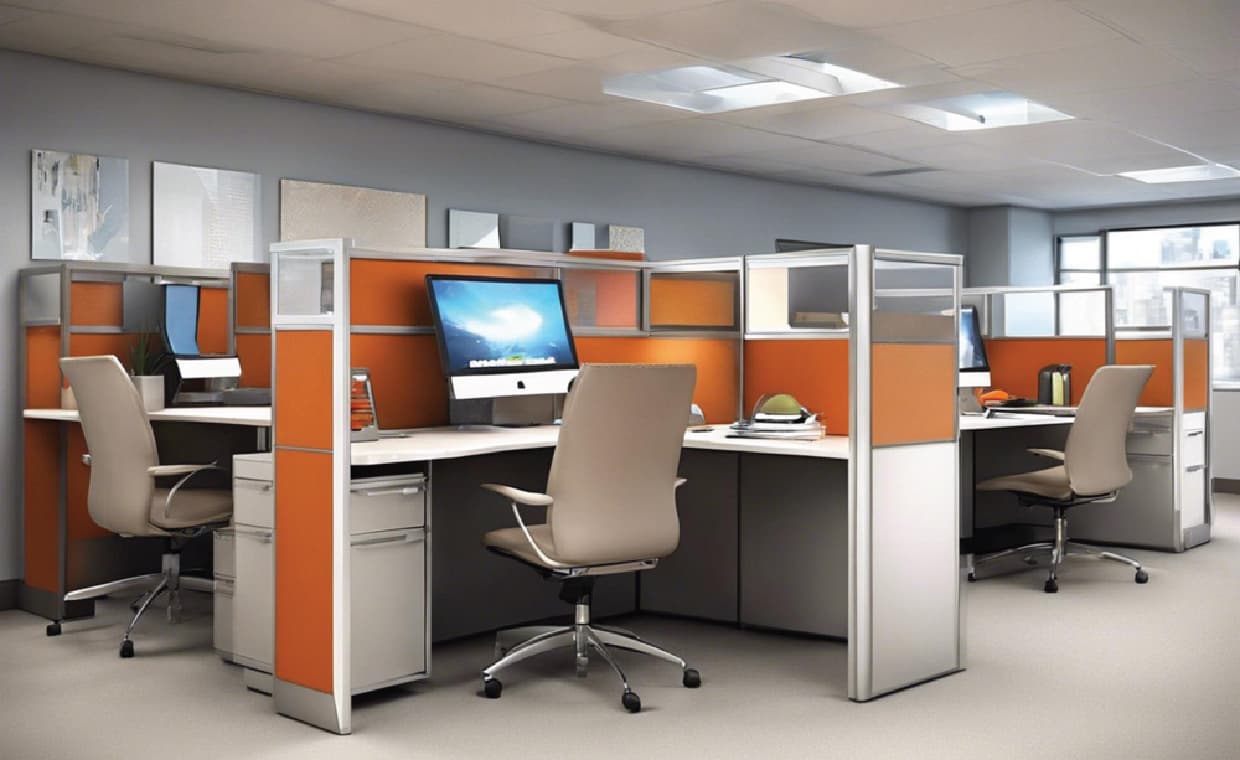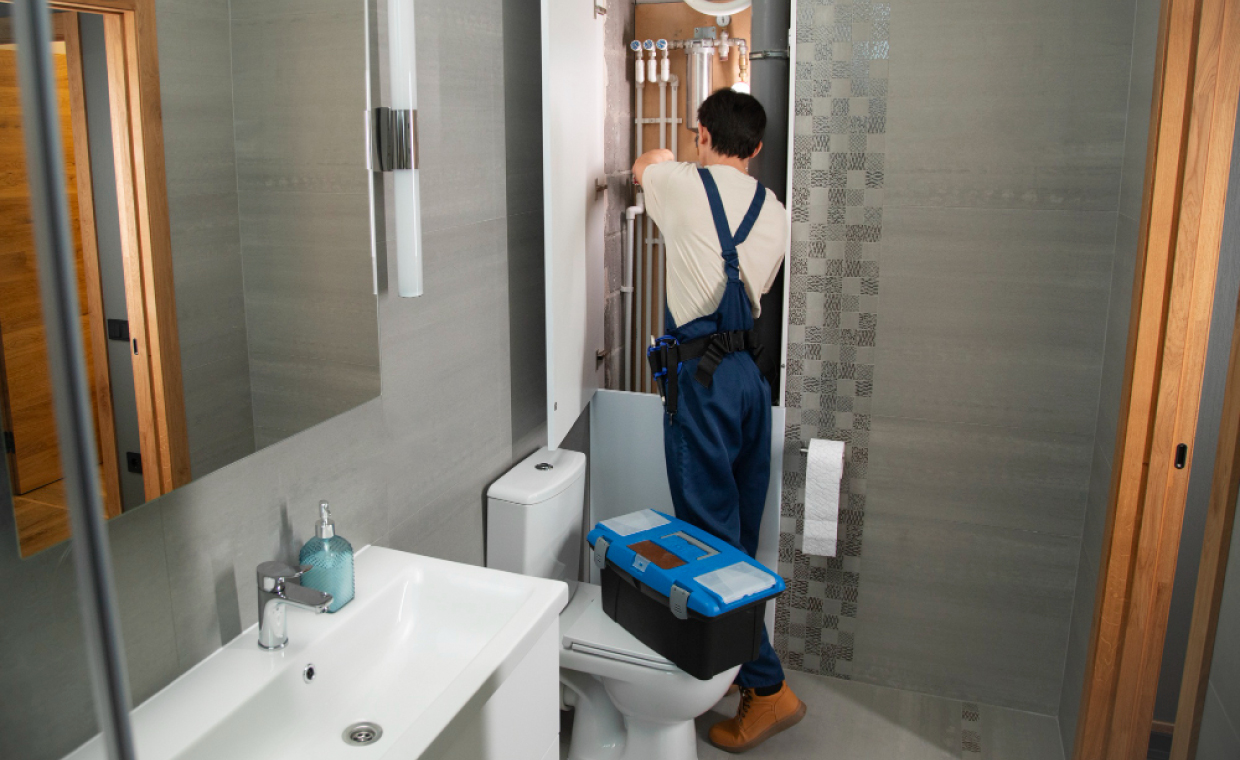
The traditional office cubicle, once a symbol of standardised and impersonal work environments, is undergoing a profound transformation. As the nature of work continues to evolve, driven by advances in technology, shifts in employee expectations, and the rise of hybrid work models, cubicle designs are being reimagined to meet the demands of the future. These innovative designs focus on flexibility, sustainability, and employee well-being, paving the way for workspaces that are not only more efficient but also more inspiring. Here’s a look at some of the most exciting new cubicle designs that are set to define the future of workspaces.
01. Hybrid Work Cubicles
With the rise of remote and hybrid work, the need for adaptable workspaces has become paramount. Hybrid work cubicles are designed to seamlessly transition between in-office and remote work modes. These cubicles feature integrated video conferencing systems, soundproofing for virtual meetings, and easy connectivity for personal devices. Additionally, they are equipped with modular components that can be reconfigured to support different work styles, whether it’s heads-down focus work or collaborative team sessions. By catering to the needs of both in-office and remote workers, hybrid work cubicles ensure that employees remain productive and connected, regardless of their location.
02. Sustainable and Eco-Friendly Cubicles
Sustainability is no longer just a trend; it’s a necessity. The future of cubicle design is increasingly focused on minimising environmental impact while creating healthier work environments. Sustainable cubicles are made from recycled and recyclable materials, such as reclaimed wood, recycled aluminum, and low-emission fabrics. They also feature energy-efficient lighting and are designed to maximise natural light, reducing the need for artificial lighting. Some innovative designs even incorporate solar panels or green roofs, contributing to a company’s overall sustainability goals. By prioritising eco-friendly materials and energy efficiency, these cubicles not only help protect the planet but also create a more pleasant and health-conscious workspace.
03. Wellness-Oriented Cubicles
As companies place greater emphasis on employee well-being, cubicles are being designed with features that promote physical and mental health. Wellness-oriented cubicles may include ergonomic office furniture Miami, such as sit-stand desks and chairs that support proper posture, as well as accessories like footrests and monitor stands. Some designs incorporate elements like air purifiers, circadian lighting systems that mimic natural daylight, and biophilic features such as indoor plants and water elements. These cubicles are designed to reduce stress, enhance focus, and improve overall well-being, contributing to a healthier, happier workforce.
04. Technology-Enhanced Cubicles
In an increasingly digital world, the integration of technology into workspace design is crucial. Technology-enhanced cubicles are equipped with smart features that make daily tasks more efficient and convenient. These cubicles may include wireless charging stations, integrated power management systems, and smart desks that adjust height with a touch or voice command. Advanced models also offer IoT connectivity, allowing for personalised lighting, temperature control, and even environmental monitoring through a central app. The future of cubicles lies in leveraging technology to create more intuitive and responsive work environments, helping employees work smarter, not harder.
05. Collaborative Cubicles
The need for collaboration is driving the evolution of cubicle design towards more open and interactive spaces. Collaborative cubicles are designed to foster teamwork while still providing the option for privacy when needed. These designs often feature movable partitions, shared desks, and open layouts that encourage spontaneous discussions and brainstorming sessions. Some innovative designs even include writable surfaces or digital whiteboards within the cubicle itself, making it easier for teams to capture and share ideas in real-time. By creating spaces that support both individual work and collaboration, these cubicles enhance creativity and drive innovation.
06. Acoustically Balanced Cubicles
Noise control remains a critical challenge in open-plan offices. Acoustically balanced cubicles are designed to address this issue by incorporating sound-absorbing materials, high-backed partitions, and acoustic panels that reduce ambient noise. These cubicles create a quieter, more focused work environment, allowing employees to concentrate on their tasks without distraction. Advanced designs may also include noise-cancelling technologies or sound-masking systems that further enhance privacy and focus. By providing a more acoustically controlled workspace, these cubicles help boost productivity and employee satisfaction.
07. Personalised and Customisable Cubicles
The future of workspaces is all about personalisation. Customisable cubicles allow employees to tailor their work environment to their individual preferences and needs. These designs offer options for adjustable lighting, temperature control, and even personalised decor, enabling employees to create a space that feels uniquely theirs. Some designs also feature modular components that can be easily rearranged to suit different tasks or work styles, providing flexibility and adaptability. By empowering employees to customise their workspace, these cubicles foster a sense of ownership and pride, leading to greater engagement and productivity.
08. Mobility and Flexibility-Focused Cubicles
As the pace of work accelerates and the demand for flexible spaces grows, mobile cubicles are emerging as a key trend. These cubicles are designed to be easily movable and reconfigurable, allowing companies to quickly adapt their office layout to changing needs. Whether it’s accommodating a new project team or creating temporary workstations, mobile cubicles provide the flexibility needed to keep pace with the dynamic nature of modern work. These designs often feature lightweight materials, wheels for easy movement, and modular components that can be assembled and disassembled as needed. By offering maximum flexibility, mobile cubicles enable companies to create agile and responsive work environments.
09. Biophilic and Nature-Inspired Cubicles
Bringing the outdoors into the office is a trend that continues to gain traction, and biophilic cubicles are at the forefront of this movement. These cubicles are designed with natural materials, such as wood and stone, and often incorporate living plants, water features, and access to natural light. The connection to nature has been shown to reduce stress, increase creativity, and improve overall well-being. Some innovative designs even include features like built-in planters, moss walls, or views of outdoor spaces, creating a calming and rejuvenating work environment. By integrating nature into the workspace, biophilic cubicles contribute to a more balanced and harmonious office atmosphere.
10. Privacy-Preserving Cubicles
In a world where open-plan offices dominate, the need for privacy has not diminished. Privacy-preserving cubicles are designed to offer secluded spaces for focused work, phone calls, or confidential meetings. These cubicles often feature high walls, soundproofing, and enclosed designs that create a quiet, private retreat within the office. Some designs also include elements like tinted glass or retractable shades to further enhance privacy. By providing spaces where employees can work without distractions or interruptions, privacy-preserving cubicles help improve concentration and productivity.
Conclusion
The future of cubicle designs is bright, with innovations that reflect the changing needs of the modern workforce. From hybrid work solutions and sustainable materials to wellness-focused features and advanced technology integration, the cubicles of tomorrow are designed to enhance comfort, productivity, and employee satisfaction. As companies continue to evolve, these innovative cubicle designs will play a crucial role in shaping the future of workspaces, creating environments that are not only efficient and functional but also inspiring and supportive of employee well-being.
Also Read: Top 6 Effective Small Home Office Design Tips for You






























